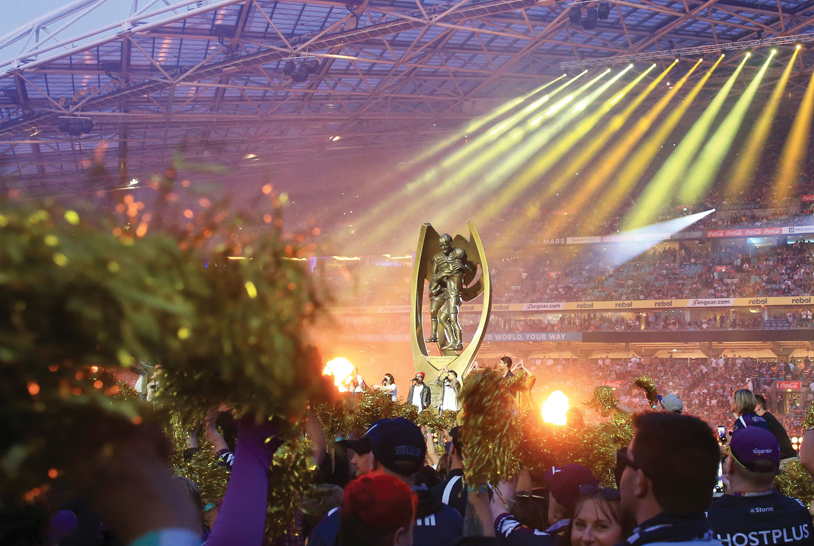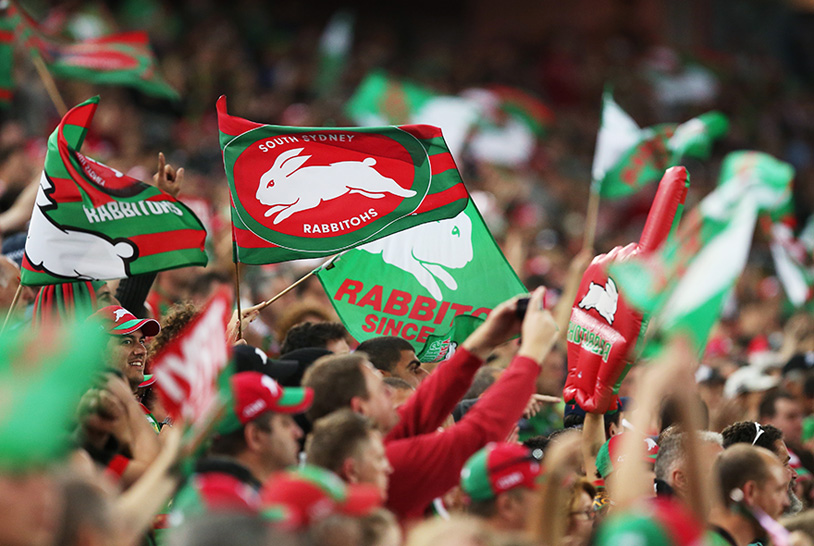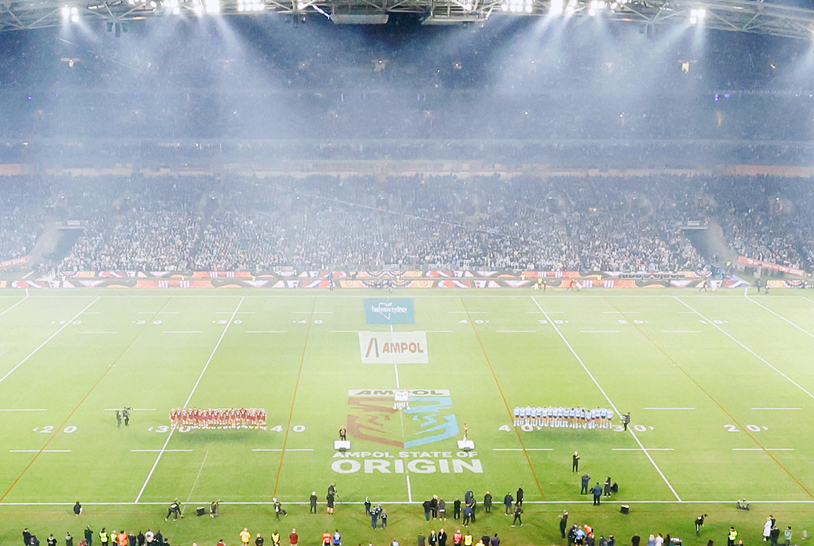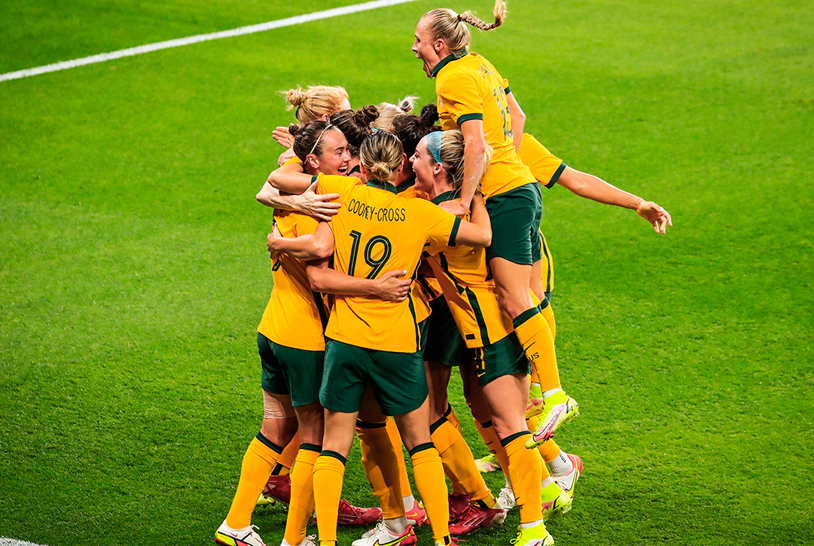

10 hours, 23 acts, 75,000 fans, a global TV audience, $10 million raised
Arthur Stanley
“We are the champions, my friends. And we’ll keep on fighting ‘til the end.”
As Adam Lambert’s voice boomed out across Sydney’s Stadium Australia in unison with Queen legends Brian May and Roger Taylor, an entire nation joined in the chorus.
After a summer of heartbreak caused by the horrific bushfires that have devastated communities across Australia, this was finally a time for unity and healing.
And so on a blessedly pleasant Sunday evening in mid-February, here we were . . . dozens of Australian and international artists giving up their time to perform at a Fire Fight Australia concert in front of 75,000 fans and an international TV audience of millions, while raising more than $10 million for bushfire relief funds.
This was an event that showcased the absolute best of Australia and the nation’s fighting spirit. Comparisons were immediately made to the famous Live Aid concert at Wembley in 1985 that raised millions for the Ethiopian famine, not least because Queen replicated that signature set for the first time in 35 years.
For more than 10 hours on Sunday 16 February, as a cavalcade of superstars performed for a pulsating Stadium Australia crowd and TV audiences, it felt as if the world was united in its empathy for Australia’s bushfire victims.
And while the concert featured some of the biggest names in the music industry, the real stars of the show were in the stands as thousands of heroic firefighters and emergency services staff joined the capacity crowd standing together with all fire-affected Australians.
THE EVENT
The enormous success of the Fire Fight Australia concert prompted rising First Nations performer Mitch Tambo, who performed You’re the Voice in his native language alongside John Farnham and Olivia Newton-John, to declare that the event would go down as “an iconic moment in Australian history”.
“It was such a massive platform . . . an iconic moment in our history for sure. Future generations are going to talk about this concert and what it stood for: when a big portion of the nation is in need, we don’t just sit back and let people suffer,” Tambo said.
Veteran Australian journalist Ray Gatt concurred, saying, “The Fire Fight concert will be remembered as one of the greatest events in Australian entertainment history”.
Legendary music commentator Glenn Baker said just as Live Aid did 35 years ago, the Fire Fight Australia concert had “captured the attention of the world”.
“It was probably the most dramatic concert event we’ve done. It set a new standard of production in Australia,” Baker summed up.
THE FINALE
Tambo had been on stage as the show came to a spectacular finale, with Queen guitarist Brian May returning to the stage for a scintillating show-closer with Farnham
For more than 30 years, You’re the Voice has been tattooed on Australia’s heart as something very close to a national anthem. Farnham has performed his signature song hundreds of times, yet the version of his 1986 hit single that unfolded at Stadium Australia for Fire Fight was the most moving and striking take ever aired.
Tambo sang the entire second verse in Gamilaraay language as Olivia Newton-John, a living national treasure, lent her voice to the performance.
But for the final chorus, the real stars emerged, walking out to stand between the performers and the crowd . . . 14 volunteer firefighters, young and middle-aged, wearing bright yellow jackets and sturdy boots. They were the people their communities looked to in a time of national crisis, and as uncomfortable as they were at being the centre of attention, they were the ones who provoked the night’s biggest and most heartfelt cheers and round of applause.
As well as Queen & Adam Lambert, Farnsy, Olivia and Tambo, the 23 acts included Michael Bublé on relay from Melbourne, 5 Seconds of Summer debuting a new song, Delta Goodrem coming on stage holding an Australian flag, the soulful k.d. lang journeying to Australia just to perform two songs, Hilltop Hoods turning their set into a hip hop collaboration, as well as Tina Arena, Alice Cooper, Daryl Braithwaite, Jessica Mauboy, Grinspoon, Baker Boy and Ronan Keating.
THE TEAMWORK
The concert was an enormous collaborative effort that involved promoters TEG Dainty and TEG Live, VenuesLive – the operator of Stadium Australia – and government agency Venues NSW, Transport for NSW, and the broadcasters Channel 7 and Foxtel, along with a community willing to help those in need.
Securing the diverse array of musical talent was the work of TEG, which organised the show at short notice. Big-name artists Queen, Michael Buble and Alice Cooper were already in Australia and local acts quickly jumped on board to take part.
TEG chief executive Geoff Jones said it had been “an enormous effort from the industry to pull this concert together in five weeks and we are just so proud of what has been achieved through our collective effort”.
Paul Dainty, president and CEO of TEG Dainty said: “We are overjoyed at the response from all of the fans at Stadium Australia in Sydney and around the world. From the first conversation with Queen’s manager, Jim Beach, the band’s immediate response to support this amazing event was what set everything in motion.”
Queen had played at Stadium Australia to 70,000 fans the night before the Fire Fight Australia concert and donated their stage to the bushfire relief event.
THE RATINGS
The concert delivered a ratings boon for the Seven Network, with more than one million viewers tuning in nationally across the five city metro areas. The 10-hour show was live on Seven, as well as the Foxtel-owned cable networks FOX8. Coverage was also available via on-demand services Foxtel Now, Foxtel GO and 7plus.
A two-hour package of the show was screened in the US on Fox Networks, Sky in the UK and TVNZ in New Zealand, while Channel 7 replayed the show in Australia a week later.
Venues NSW – the government agency that owns Stadium Australia on behalf of the NSW Government – provided Sydney’s Olympic stadium free of charge for the event, and the Stadium itself offered up proceeds from food & beverage sales on the day to the bushfire relief funds.
Stadium staff, along with concert and TV broadcast production crews, worked through the night to clean, re-stock and reconfigure Stadium Australia so that it was ready to host the 10-hour Fire Fight extravaganza just hours after 70,000 fans had witnessed Queen & Adam Lambert in concert the night before.
Transport for NSW, on behalf of the NSW Government, provided free public transport for all ticketholders, with more than 50,000 patrons using public transport to attend the concert.
Given the focus on climate change and its role in the recent bushfire crisis, Stadium Australia staff worked with key stakeholders on a range of environmental and sustainability initiatives. A high percentage of the 2 tonnes of rubbish collected post event was recycled.
THE STADIUM
Stadium Australia, generic name Stadium Australia, has hosted some of the nation’s biggest live concerts in its 21-year history, along with many of Australia’s greatest sporting events.
The Fire Fight Australia concert will be the last major live concert at the venue before it undergoes a much-anticipated redevelopment from July this year, and many people recognised the significance of this magnificent concert in terms of it being an event to remember.
Stadium Australia was built for the 2000 Sydney Olympic & Paralympic Games and the investment by the NSW Government is to ensure it remains the iconic venue it was built to be, capable of hosting stunning events such as Fire Fight well into the future.
Sure there is still a State of Origin rugby league game and other events to come at Stadium Australia in 2020, but there’s no doubt the Fire Fight concert will live long in the memories of everyone who was there to experience it or watched it on TV around the world.
THE LEGACY
Daryl Kerry, CEO of Stadium Australia, said the way the Fire Fight concert had come together in such a short time frame was a credit to the entertainment industry and the NSW Government, along with the broadcasters and his Stadium team. “Everyone embraced the opportunity we had to do something significant to help those in need,” Mr Kerry said.
“When we set out to help other people, our goal is to make a difference . . . raising $10 million will make a difference to those in need, and the Fire Fight concert also showcased the wonderful community spirit we have here in Australia and clearly also made a lot of people happy.”
Venues NSW Chairman Christine McLoughlin said the agency had been incredibly proud to play a role in bringing this historic event to the community.
“This was a truly global event, featuring international stars and beamed to a worldwide TV audience, but it was closer to home where the involvement of the Australian people really made it memorable,” Ms McLoughlin said.
“At the Stadium, the community united to create an atmosphere in the precinct reminiscent of the 2000 Olympics – bringing together friends, families, artists and emergency staff to show their support for each other as millions more tuned in to be a part of the action from home.
“In having such a positive and unifying effect, the Fire Fight concert demonstrated the unrivalled ability of major event venues to bring people together and create a vibrancy that extends into the community, well beyond those who attend the event.
“A heartfelt thank you to all who donated their talent, time and energy to this spectacular event.”
Arthur Stanley is General Manager Media & Communications at VenuesLive, operator of Stadium Australia, Sydney.
Picture: Emma Rothfield/Stadium Australia







